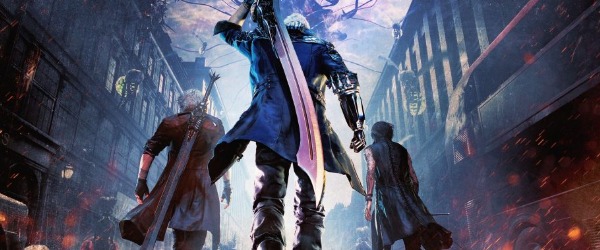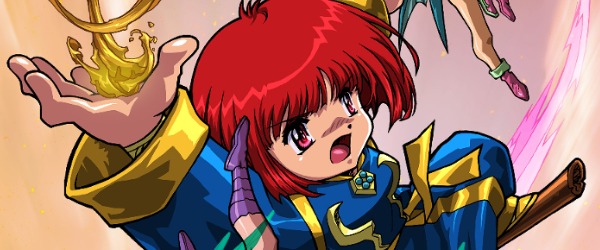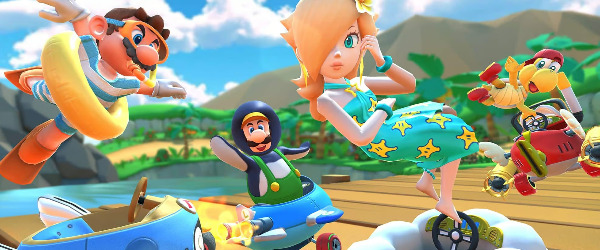
The 'Super' in Metroid - Article
by Spencer Manigat , posted on 31 August 2016 / 11,686 Views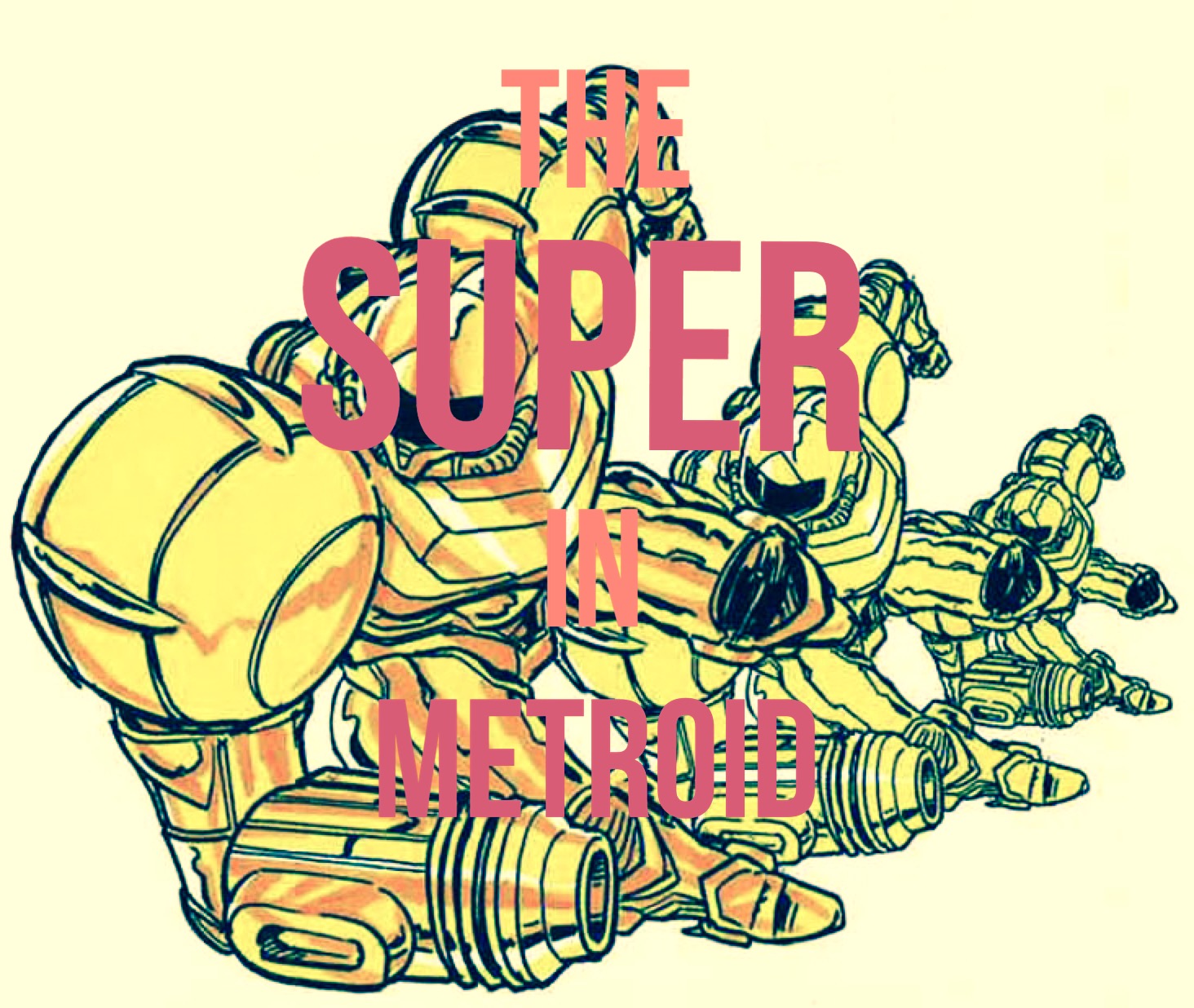
I PLAYED INFAMOUS: SECOND SON WHEN IT CAME OUT A LITTLE OVER TWO YEARS AGO
While I was underwhelmed with some aspects of the game, something that quite honestly blew me away was the game's feel. It's not an exaggeration to say that Delsin Rowe is, without rival, the best feeling character that I've ever played in a 3D game. This is coming from someone who has a big affinity for hack-n-slash action games; I get what good game feel is like. But while hack-n-slash games are proficient at making combat feel good, what Infamous: Second Son excels at is making traversal itself feel good.
But we're not here to talk about Infamous, are we? We're here to talk about Metroid. I bring up Infamous because that series is all about telling the story of a sort of "comic book hero." That's why so many of Delsin's super powers focus on traversal. There'll be more on that later, but one power that reminded me so much of Metroid comes from one of Delsin's Neon abilities: "Light Speed."
Now if you ask Infamous: Second Son players what the most useful ability in the game is, most will agree that it's Light Speed, at least when it comes to utility. It makes traversing through Second Son's intimidatingly dense city an absolute breeze. What it reminded me of, almost immediately, was Samus Aran's Speed Booster ability. Unfortunately, that ability hasn't really been translated to 3D, at least not outside of Metroid: Other M where its implementation only in straightforward linear corridors nearly disqualifies it from even being an honorable mention. The more I think about this little detail, however, the more uncomfortable I start to become with the current place that the Metroid games appear to be in right now.
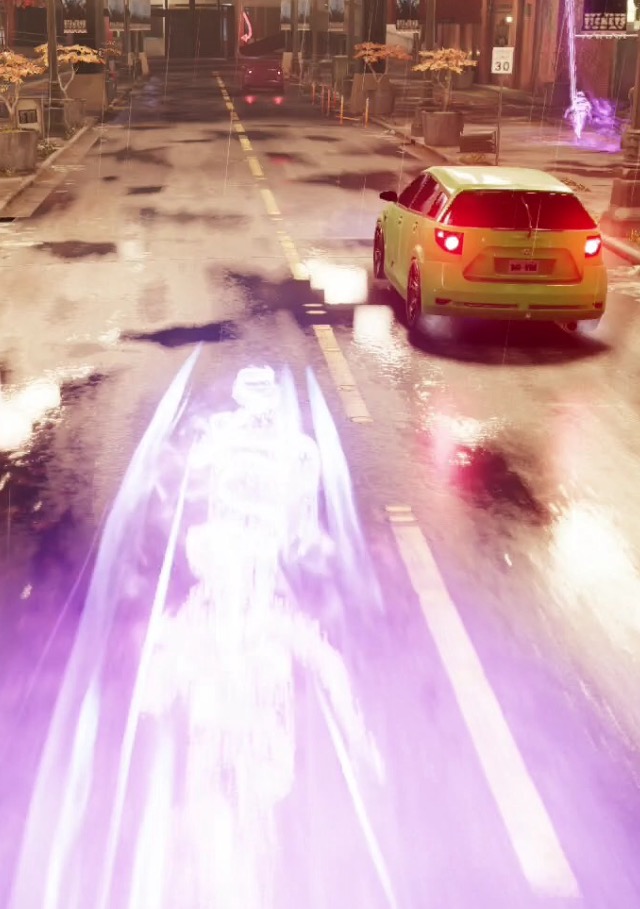
SAMUS LOST SOMETHING IN THE TRANSITION TO 3D
When I think of Samus' signature abilities, I think of the Speed Booster, the Shinespark, and of course I think of the Screwattack. The problem is that neither the Speed Booster nor the Shinespark are featured in any of the three staple 3D Metroid Prime games. You can't even run in those games. Even the Screwattack, which was finally implemented for the first time in Metroid Prime 2: Echoes, is inferior in every way to its implementation in the mainline 2D games. This is so weird, because Samus was once canonically supposed to be this extremely agile character, but in the Prime games she's this slow, hulking powerhouse.
Now don't get me wrong; the Prime games are phenomenal games. The first Metroid Prime in particular is still one of my favorite games of all time. But this demotion of movement that Samus has gotten in the Prime games feels, and this is a formal trigger warning to anyone who may be easily offended, "un-Metroid."
This is because while atmosphere, exploration, and isolation are important and integral aspects of the Metroid franchise, an often overlooked aspect of the series, which was always just as integral, is Samus herself. By this, I don't mean Samus from a narrative perspective, but from a mechanics perspective. Until the Prime games, Samus' agility has been an integral factor to the DNA of Metroid games. Now? Not so much.
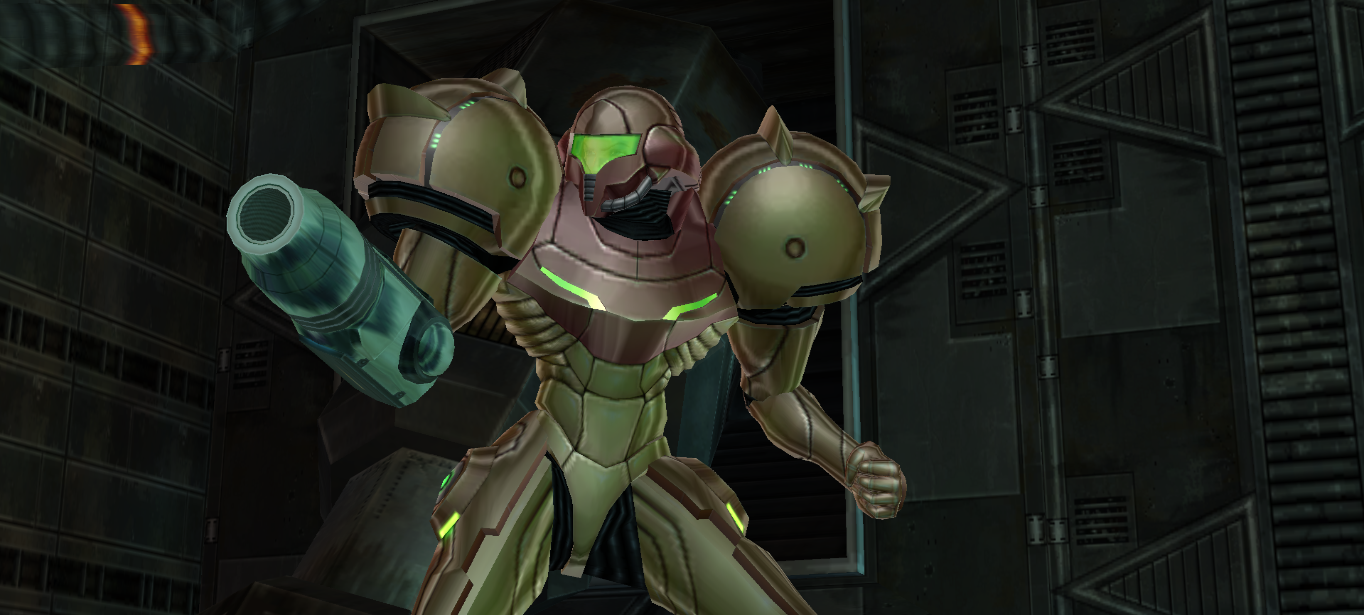
This is going to be a bit of a digression, but Samus' acrobatics are the entire genesis of the genre Super Metroid championed in the first place. Levels are designed the way they are in Super Metroid because they had to accommodate Samus' extremely lucrative set of movement tools. The world had to be sprawling and labyrinthine because anything less wouldn't have been enough to host such a mobile character. By the end of Super Metroid, Samus can jump way higher. She can use the Screwattack to perform an infinite amount of jumps in the air while also destroying any enemies that previously would have acted as obstacles. Using her Shinespark, she can rocket herself in any vertical, horizontal, or diagonal direction only until she's stopped by some impenetrable object like an unbreakable wall. She can even perform wall jumps from the get go.
There's more, but my point is that when a character has so many movement options at their disposal all at the same time, short and linear platforming challenges like those which appear in mascot platformers like Super Mario or Sonic the Hedgehog just won't cut it. The genre has been labelled "Metroidvania" by fans, but I've never liked that name. It's not descriptive - it's exemplary, and the issue with that is that both Metroid and Castlevania have had plenty of games that don't fit the genre that the name tries to define. In fact, I'd go as far as to say that the name is so non-descript that it's oftentimes incorrectly attached to games that don't fit into the genre at all, like Dark Souls or the Batman Arkham games. I don't even think the Metroid Prime games fit into this genre. I'd at least argue that their categorization alongside games like Super Metroid or Castlevania: Symphony of the Night is stretched.
THE GENRE IS "PLATFORM ADVENTURE"
The genre is popularly referred to as "Metroidvania," but what I refer to it as is the "platform adventure" genre. This is an important distinction, because when describing what a "Metroidvania" is to someone, the de facto definition is usually something along the lines of this:
"A game that unlocks progression through a connected world via the use of item upgrades."
The thing is that in 2D Metroid games, most of the power ups that Samus receives are platforming power ups. I listed some of them before, but I can go even further. The Gravity Suit completely changes the physics that Samus experiences underwater, allowing her to reach previously unattainable places. The Morph Ball allows Samus traverse through smaller spaces, and this move's traversal options only expand when the Spring Ball and especially the Morph Ball Bomb are factored in, allowing Samus to rhythmically bounce to infinite heights much earlier than she otherwise can before attaining the Screw Attack.
Even the Ice Beam is an unsung platforming weapon, allowing Samus to freeze enemies into solid platforms from which she can skip across treacherous obstacles with ease, giving her access to even more places. Sections of the world aren't merely unlocked by items, but specifically by platforming power ups allowing Samus to literally reach new places she once wasn't equipped to reach. That's Platform Adventure:
"A game that unlocks progression through a connected world via permanent platforming power ups."
Platforming and progression. Those are the two most important words here, and I'll throw in another P for good measure: Powerful. Unlocking progression via the use of permanent platforming power ups is what makes Samus Aran truly feel powerful. Embedded above is an excellent video on the topic by YouTuber Cagey Videos, and you should definitely give it a watch to contextualize what I am trying to argue here, but this topic is especially crucial for Metroid. Samus' development as a platforming character directly effects how the player views the world. Metroid Prime was my very first Metroid game, and I remember the first time I entered a body of water there. I remember how completely oppressive and uncomfortable it felt to move about in it. Hours later when I got the Gravity Suit, the moment of empowerment was like nothing I'll ever forget.
Such a seemingly tiny upgrade proved to be the most significant power up in the game for me, because it completely changed my perspective on every body of water that I had encountered in the game. The beauty is in the simplicity. Water is an easily recognizable substance, and is a natural barrier. I didn't think anything of it when I was in the water beforehand. I just assumed that that's just how water worked in this game. This wasn't like the colored doors, which were extremely blatant in their artificial sectioning off of areas. This felt more organic. Unlike with the various beam and missile upgrades Samus obtains throughout her mission on Tallon IV, this felt like one of the few legitimate moments of genuine progress and growth for me as a player as well as for Samus as a character.
WHILE SPARSE IN THE PRIME GAMES, THIS FEELING OF GENUINE CHARACTER GROWTH IS INGRAINED INTO THE 2D GAMES
While there still are colored doors that need a Missile or Super Missile to unlock, most of the level design in the 2D games section off parts of the world through the use of natural barriers. Water, quick sand, unreachable places, unstable ground, and even solid walls will regularly block Samus' path. This kind of level design gives Samus' power ups an incomparable sense of progression and weight. This is especially the case because, unlike Mario, Samus keeps all of her upgrades throughout the game and juggles through them all simultaneously. By the end of any 2D Metroid game, the world feels almost like an insignificant plaything. It's a place that at one time felt treacherous to traverse, but is a genuinely effortless treck now that Samus has a literally game-breaking arsenal of movement tools at her disposal.
This element of growth and power through platforming is even felt in the combat-centric boss fights. Think about the Kraid fight in Super Metroid. You're hopping up and down to land missiles in this reptilian abomination's mouth, only to have it suddenly grow to near skyscraper proportions. Quick on your feet, you gain altitude through a combination of wall jumps and skips across dangerous projectile spikes blasted from the girth of the monster's belly. While dodging both the oncoming spikes and other sharp debris, you get into a zen-like cycle of hopping to momentarily incapacitate the beast via a rocket to the eyes, and then hopping once more, sending another missile veering straight into its soft mouth for critical damage until it is downed. Moments like this only happen because of Metroid's absolutely integral and franchise ingrained element of platforming.
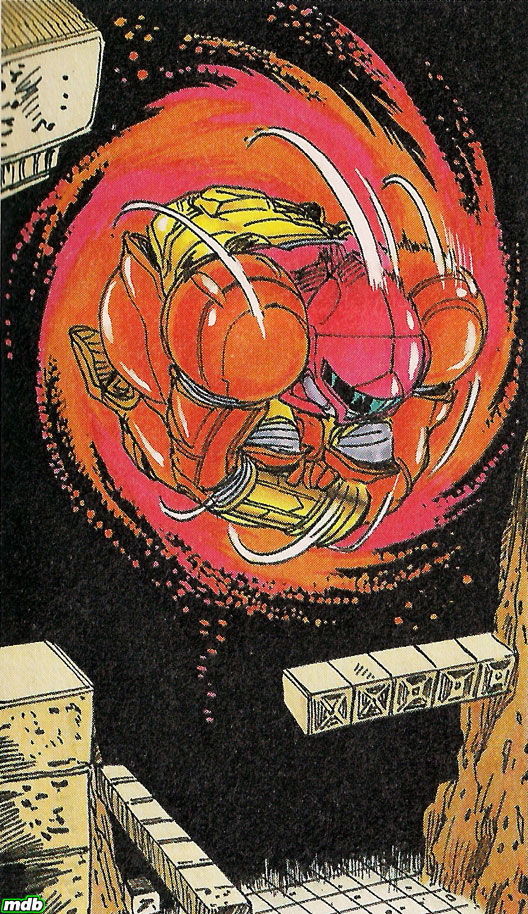
SAMUS ARAN IS FIRST AND FOREMOST A PLATFORMING HERO
I'd even go as far as to say that she has a wider arsenal of platforming tools at her disposal by the end of every 2D Metroid game than Mario has ever had at one time in any of the Mario games that he's been featured in. That's not even really debatable; all you need to do is look at Mario's platforming arsenal and then look at Samus'. It's a numbers by numbers comparison. Platforming is what makes Samus "super." It's what makes the whole franchise super. I think that this has been overlooked because of the massive success of the Metroid Prime trilogy, which greatly neutered this iconic agility of Samus' in favor of a much slower and more deliberate variant. And while it's difficult to criticize any of the Prime games too much for this because they were all done so well in spite of this, it's hard for me to not think about what could have been. I can't shake the idea that the Prime games popularized a "super-less" Samus Aran.
Samus Aran is essentially supposed to be Nintendo's version a comic book super hero. It feels that way, anyway. She even has the mask that hides her identity, at least visually. While Samus can't fly, her Shinespark, her Hi-Jump Boots, and her Space Jump essentially allow her to dance through the air in a method that is arguably cooler than flying while still being just as practical. They are certainly more original, especially when factoring in the design of her suit. The fact that Samus summersaults through the air, instead of a regular jump, gives her a very unique sense of character. Again, this is compounded by the fact that this basic jump is expanded upon with the Space Jump and Screwattack, transforming a dainty flip into an integral and powerfully original traversal technique.
There is an inherent juxtaposition felt when you see that hulking suit of armor hopping through the skies with absolute grace, like some kind of armored acrobat. This isn't some flimsy suit of armor, either. Try Speed Boosting or Shinesparking into a wall sometime. Either she'll bulldoze straight through it, gravel crumbling around her at her whim, or she'll make a momentum stopping collision so significant that it creates literal tremors. And does Samus even recoil during these fissure-inducing collisions? Not even a little bit. In a nonchalant show of absolute sturdiness, she remains like an immobile statue, helmet in earth, until she is ready to shrug it off and continue on her mission unfazed.
---

In celebration of Metroid's 30th anniversary, I played Metroid: Zero Mission for the first time. In many ways, it is a shining example of just how much the series has grown since the original NES classic. But in many other ways, it is a gloomy reminder of just how long it's been since Samus has felt that powerful in a new Metroid game. I brought up Infamous: Second Son to make it clear that this article isn't a "2D vs. 3D" debate. I think that it's absolutely possible to make a 3D character feel the way Samus feels in the 2D games, and Infamous: Second Son is but a tiny glimpse of what that might look like.
Believe it or not, the purpose of this article has actually been to celebrate Metroid's long history. I guess the only way I know how to honor something that I love as much as this is to criticize it. It's important to commemorate the longstanding success of a franchise like this, but I also feel like Metroid has lost something in its transition to 3D that's gone unnoticed because the result of that transition was still really good. With Metroid Prime: Federation Force being the latest entry in the series, and the series producer talking about making another Prime game, I can't help but feel like the Prime series is overstaying its welcome a little bit. Again, I love those games, but the story was tied up pretty neatly with Metroid Prime 3: Corruption, and that was almost 10 years ago.
SHINESPARKING FORWARD...
I've always wanted to see a Metroid game that focused on the Galactic Federation, but setting that in the Metroid Prime universe just feels superfluous. Another Prime game revolving around the conflict between Samus and some bounty hunter from a spin off Prime title would be equally superfluous. Metroid is in a really weird place right now, and the last thing it needs is to retread sacred ground. Nintendo has an opportunity to give us something new, just like they did with the first Prime. On this, the anniversary month of one of the most respected franchises in gaming history, I just want to shine some light on a long forgotten, yet absolutely integral, aspect of the series in the hopes that on the next anniversary I can talk about how the newest game finally recaptures that long lost feeling of being super.
 Playing video games since the age of 5, Spencer Manigat has been fascinated with the possibilities of this interactive medium for nearly as long as he could speak. Recently, his growing obsession with learning about tactile mechanics, interactive narratives, and all things on the academic side of gaming has lit a new passion in him to discuss, debate, and critique various topics in this brilliant medium of video games that we all find ourselves participating in. Super Metroid, Metroid Prime, and The Legend of Zelda: The Wind Waker are a few of his favorite games. You can contact Spencer at spencer.manigat@gmail.com or follow him on Twitter @spencewashere.
Playing video games since the age of 5, Spencer Manigat has been fascinated with the possibilities of this interactive medium for nearly as long as he could speak. Recently, his growing obsession with learning about tactile mechanics, interactive narratives, and all things on the academic side of gaming has lit a new passion in him to discuss, debate, and critique various topics in this brilliant medium of video games that we all find ourselves participating in. Super Metroid, Metroid Prime, and The Legend of Zelda: The Wind Waker are a few of his favorite games. You can contact Spencer at spencer.manigat@gmail.com or follow him on Twitter @spencewashere.
More Articles
Pretty awesome read, I know what you meant with her character changing in speed for the prime games, but really if you think about it, if you were to speed her up to the point where you were rocketing through areas with something like the shinespark you would have so many issues.
The most obvious reason for her lack of speed and summersault in prime is that if they were included in FPS you would probably not be able to control her accurately enough to play the game... or you would feel sick having your view spiral around each time you jumped forwards with a summersault.
Another thing is that Prime seems like a huge game to get lost in... but it isn't, the reality is the game is a lot of small rooms tied together with a door opening/loading system to trick you into thinking it is one giant complex, another thing which gives you the illusion of size is the speed of the character in that space, if you have a small room that you can dart around quickly, it would have become so apparent so very quickly that Metroid Prime was actually not on the same scale as things like Halo at the time, but with Samus being slowed down and adding lots of things like Vegetation getting in the way and steam pumping in front of your visor then you get so much to distract you from seeing just how small the area's are, and that's the thing... the GC was a powerful console... but storage wise it would not have been possible to create a world much bigger than MP's without making it barren and empty just to facilitate a faster moving character.
@Ganoncrotch - You know, you actually make some excellent points here. While I do think that some of the issues you bring up would have been solved changing the game to a third person perspective, there is really no way around the hardware limitations of the GCN, and most of the powers I talk about here would have exposed those limitations. Smart thinking pointing out the deceptively smaller scale world of Prime compared to other games. Retro Studios did some real magic in hiding things like that, and it can be easy to forget.
I do think that the Prime games did an absolutely phenomenal job carrying over as much of Metroid's spirit as possible, given the contraints. I just hope that now that we are at a time where hardware isn't the restricting factor that it used to be, we can finally get a Metroid game in 3D that can bring back some of that "super."
Haha, on reading the last line I can't help but picture Trump "Make Metroid Super again" :)
But yeah when you think back to some of the huge area's of the 2 Metroids on the GC even in Giant looking boss fights... you were normally on a small area firing at a target which a lot of the time was not near you or was moving in what looked to be a open area... fantastic trickery by retro indeed, even down to the way loading worked in that game, absolutely fantastic, just some rooms were a bit more obvious at times, when you would shoot a door and have to wait 5+ seconds before it would open for you.
I think one of the absolutely best ways that MP captured the feeling of Super Metroid for me was the music though, not even music but just the atmospheric sounds of the rain, water, rumbling earth under you... Halo at the time might have had huge open areas, but when a blast of steam hit your Visor from a pipe in the wall in Prime it was far more believable that you were there, in the suit. (for me at least)
Good points, except I'm not sure what you meant at the end. The part about it not being possible to have a much larger world without it being barren. Disc space is a thing, yes, but it's not as limiting as you make it seem.
Amazing perspective. Thank you for labeling a meaningful moniker on the genre. Great distinction.
Yeah good read I think a lot of games have gone down the same path in there transition to 3D.
Metroid's translation into 3D I think is best done as a Third person action game, so they can retain those platforming elements that were lost in the prime series.
Metroid Prime is a masterpiece
I always wished the Prime games had been third person instead of first person. Prime was a fun game, but it sacrificed a lot of Metroid game mechanics because they wouldn't have worked in a first person game.









